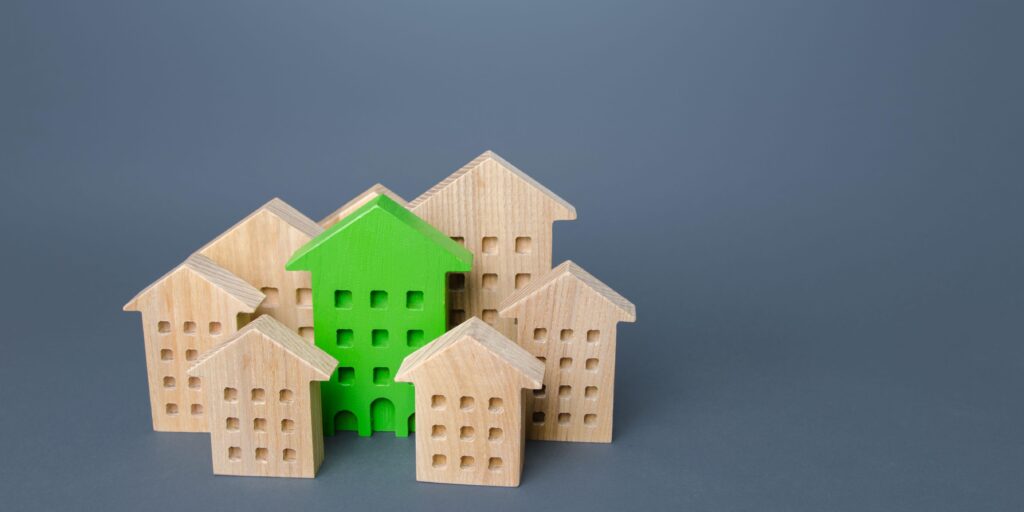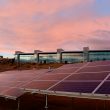The future of carbon emissions and cities lies in green buildings
When you envision the future, what do you see? For me, it’s a place where people of all generations live, work and thrive. And it’s a place where green, efficient buildings are integrated with nature and resilient infrastructure ties our healthy and productive places together into communities.
However, in the face of climate change, that dream could become much harder to realize. More than eight in 10 people in the U.S. live in urban areas, which are increasingly facing risks from sea level rise, extreme heat and drought. While events like hurricanes and flooding put a massive strain on community resources, ongoing challenges such as housing insecurity, development inequities and aging infrastructure are all made worse by a changing climate.
The good news, though, is that there’s a clear roadmap to success: It’s a holistic, inclusive approach to sustainable development, and it advances nature-based solutions, decarbonization, location efficiency, circularity and many other factors contributing to quality of life.
In my role at the U.S. Green Building Council (USGBC), I oversee LEED for Cities, a rating system and certification program built by and for local governments pursuing a more sustainable future. Throughout my career, I’ve worked with leaders across the country (and the world) grappling with these issues. I’ve witnessed investments in building codes, regulations and infrastructure, adoption of land use and zoning reform, and the ratcheting up of commitments resulting in ambitious climate action plans. I’ve seen the success when cities convene diverse stakeholders to set up green banks, implement public-private partnerships and deploy creative financing that unlocks improvements.
Tackling climate change requires a comprehensive approach that considers multiple factors, including reducing the amount of greenhouse gases emitted within the community. And one of the biggest challenges our cities face is reducing the carbon emissions emitted by buildings.
In the U.S., residential and commercial buildings produce about a third of energy-related carbon emissions and 40 percent of energy usage, according to the U.S. Energy Information Administration. Yet, much of the energy used by commercial buildings is wasted. This applies to consumers as well. The average American household is overspending as much as $400 per year, according to the U.S. Department of Energy, on their annual energy bills because of poorly sealed doors, drafty windows, and outdated heating and cooling systems.
Green buildings, like those that are LEED certified, can be part of the solution. Green buildings lower day-to-day costs of building operation and maintenance, per research by the U.S. Green Building Council (USGBC). They cut carbon emissions by a third, and cut water, energy use and waste, too. Even better, green buildings have important co-benefits for human health, water resources, reducing waste and other critical outcomes.
There are many ways for city and county governments to be greener—and to defray the costs of these transitions, upgrades and retrofits. The federal government is helping local governments through the Inflation Reduction Act (IRA) and the Infrastructure Investment and Jobs Act (IIJA). Passed by the U.S. Congress, the IRA and the IIJA contain an estimated $450 billion in investments to make buildings and infrastructure more climate-friendly and resilient.
For example, states or localities that want to upgrade their building codes can access more than $1.2 billion. There are expanded tax incentives for making clean energy and energy efficiency investments for schools, municipal buildings, universities, and hospitals. Plus, there’s low-cost financing for all sorts of greenhouse gas reduction activities.
The IRA is also providing grants to cities and regions interested in developing or expanding climate plans as well as funds to support the implementation of those plans. Later this year, many cities will be able to apply for competitive grants for efforts to reduce their greenhouse gas emissions.
Cities are quickly planning to receive federal funds and ramp up their sustainability efforts. As they identify local priorities that could be eligible for funding, cities can look to successful programs for building retrofits, energy efficiency, and implementation of climate action plans.
In Atlanta, for example, the city’s climate plan includes focused actions around buildings and making them more energy efficient, and city officials are tapping into the funds provided by the IRA.
The city of Greensboro, N.C., worked with its local utility company to swap the city’s streetlamps for modern, energy efficient LED fixtures. Additionally, the city completed a system-wide water loss audit to assess the efficiency of the water distribution system.
The city of Las Vegas created a Green Building Fund to finance sustainability incentives, specifically for permitting fee reductions for buildings meeting specific benchmarks. Plus, the city annually disclosed its municipal and community greenhouse gas emissions. City officials also used USGBC’s LEED for Cities rating system framework to inform their 2050 Master Plan, a 30-year comprehensive plan to foster community-driven implementation and improve quality of life for all residents.
In Tallahassee, Fla., the city provided development bonuses for construction projects that included green-certified structures.
And in the city of Washington, D.C., one of the first cities to earn LEED for Cities certification, local officials switched municipal buildings to 100 percent renewable energy and entered into some of the largest wind and solar purchase agreements of their type.
In short, cities are already acting to improve their buildings and infrastructure, to reduce greenhouse gas pollution while enhancing community resilience. With new federal funding, taking these steps is even more accessible to cities. We don’t have to wait, and we shouldn’t. The challenges are here, and the solutions are, too. Now is the time to address carbon emissions. Now is the time to fight climate change and rising energy costs. Now is the time to protect communities and ensure they remain enriching environments for generations to come. Now is the time for all cities and counties to create a future that is built to last, which means it’s built to be green.
Hilari Varnadore is vice president for cities at the U.S. Green Building Council, where she supports local governments around the world engaged in sustainability reporting and accountability. She heads up USGBC’s LEED for Cities program, which includes administering the Local Government Leadership Program.



















